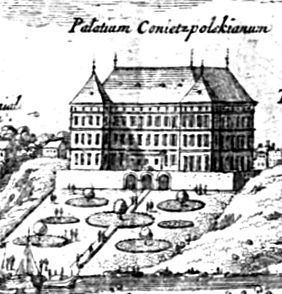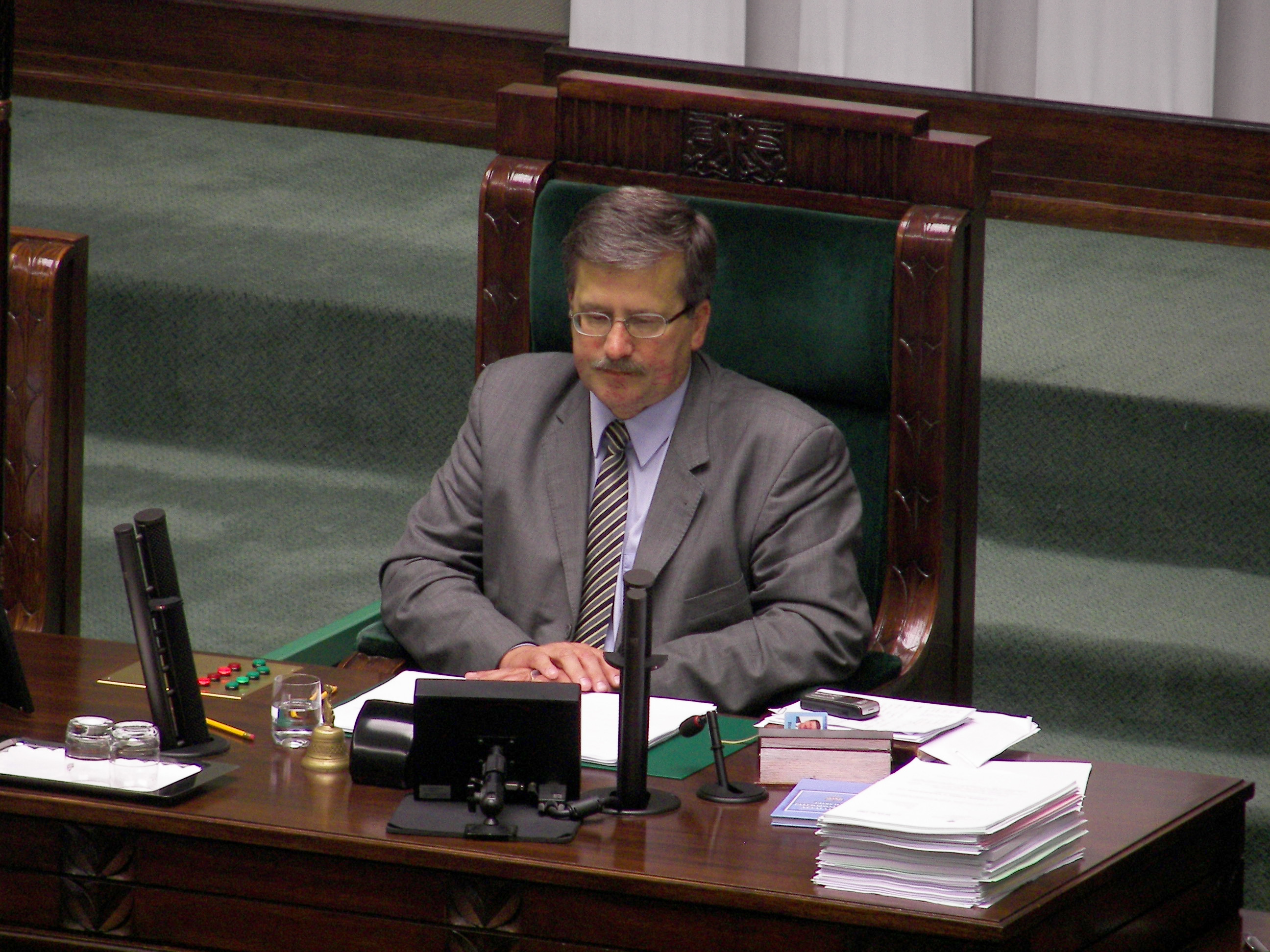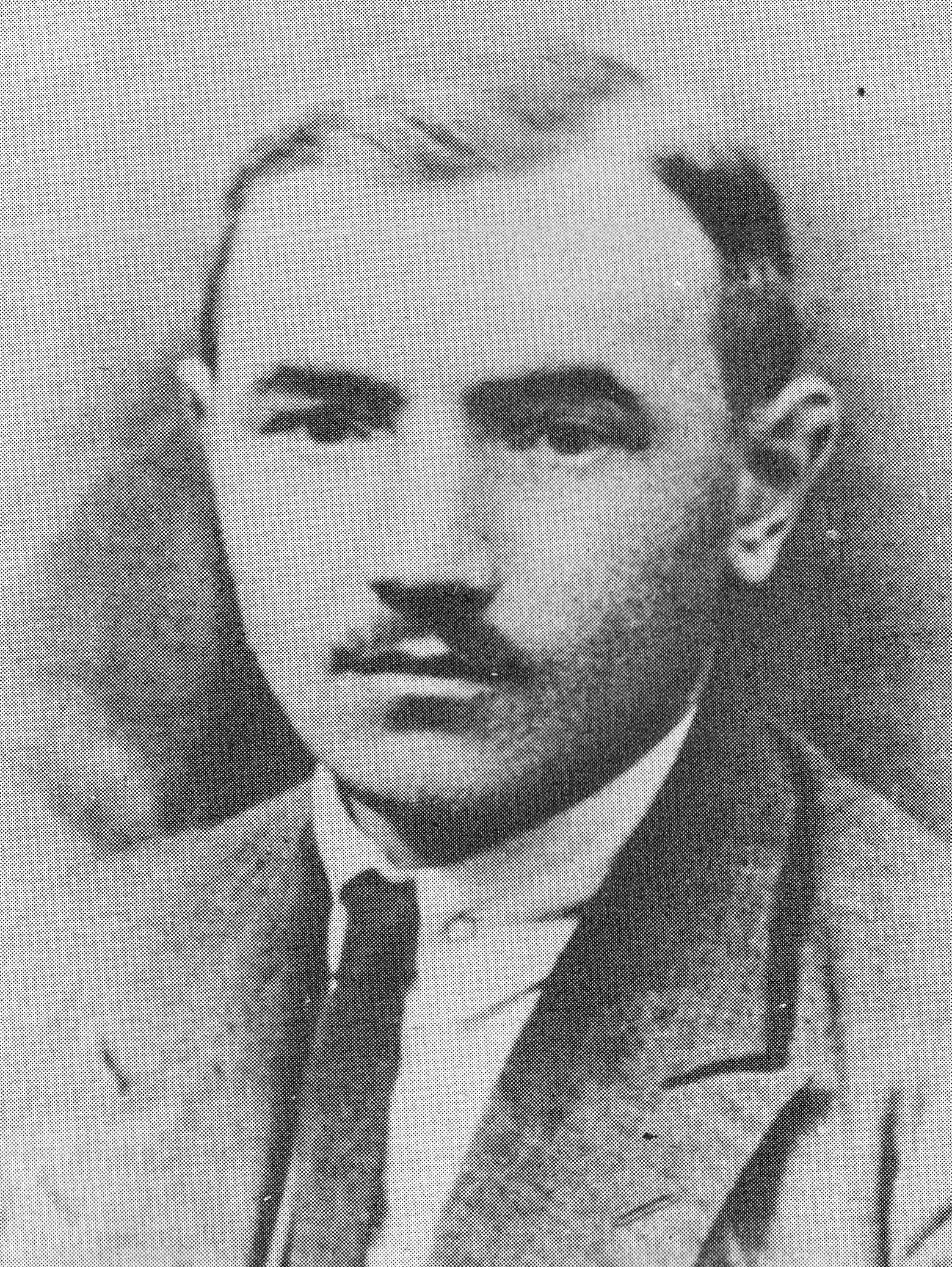|
Belweder
Belweder (; from the Italian language, Italian ''belvedere'', "beautiful view") is a Neoclassical architecture, neoclassical palace in Warsaw, Poland. Erected in 1660 and remodelled in the early 1800s, it is one of several official residences used by Polish presidents as well as a state guest house for visiting heads of state. The complex is situated south of Warsaw's city center, in the vicinity of the historic Łazienki, Royal Baths Park (Łazienki). History The present building is the latest of several that stood on the site since 1660. Belweder once belonged to Poland's last king, Stanislaus Augustus, who used it as a porcelain-manufacturing plant. From 1818 it was the residence of Grand Duke Constantine Pavlovich of Russia, Grand Duke Constantine Pavlovich, who de facto acted as viceroy in the Congress Kingdom of Poland. He fled from Belweder at the beginning of the November Uprising, November 1830 Uprising. After the re-establishment of Poland's independence following th ... [...More Info...] [...Related Items...] OR: [Wikipedia] [Google] [Baidu] |
Józef Piłsudski
), Vilna Governorate, Russian Empire (now Lithuania) , death_date = , death_place = Warsaw, Poland , constituency = , party = None (formerly PPS) , spouse = , children = Wanda, Jadwiga , profession = , signature = Józef Piłsudski Signature.svg , footnotes = , nickname = , allegiance = Austria-HungarySecond Polish Republic , branch = Polish LegionsPolish Army , serviceyears = 1914–19231926–1935 , rank = Marshal of Poland , unit = , commands = , battles = World War IPolish–Ukrainian WarPolish–Lithuanian WarPolish–Soviet War , awards = , resting_place = Józef Klemens Piłsudski (; 5 December 1867 – 12 May 1935) was a Polish statesman who served as the Chief of State (1918–1922) and First Marshal of Poland (from 1920). He was cons ... [...More Info...] [...Related Items...] OR: [Wikipedia] [Google] [Baidu] |
Łazienki Park
Łazienki Park or Royal Baths Park ( pl, Park Łazienkowski, Łazienki Królewskie) is the largest park in Warsaw, Poland, occupying 76 hectares of the city center. The park-and-palace complex lies in Warsaw's central district ('' Śródmieście'') on Ujazdów Avenue, which is part of the Royal Route linking the Royal Castle with Wilanów Palace to the south. North of Łazienki Park, on the other side of Agrykola Street, stands Ujazdów Castle. Originally designed in the 17th century as a baths park for nobleman Stanisław Herakliusz Lubomirski, in the 18th century Łazienki was transformed by Poland's last monarch, Stanislaus II Augustus, into a setting for palaces, villas, classicist follies, and monuments. In 1918 it was officially designated a public park. Łazienki is visited by tourists from all over Poland and the world, and serves as a venue for music, the arts, and culture. The park is also home to peacocks and a large number of squirrels. History Łazienki Park w ... [...More Info...] [...Related Items...] OR: [Wikipedia] [Google] [Baidu] |
Polish President
The president of Poland ( pl, Prezydent RP), officially the president of the Republic of Poland ( pl, Prezydent Rzeczypospolitej Polskiej), is the head of state of Poland. Their rights and obligations are determined in the Constitution of Poland. The president heads the executive branch. In addition, the president has a right to dissolve parliament in certain cases, can veto legislation and represents Poland in the international arena. History The first president of Poland, Gabriel Narutowicz, was sworn in as president of the Second Polish Republic on 11 December 1922. He was elected by the National Assembly (the Sejm and the Senate) under the terms of the 1921 March Constitution. Narutowicz was assassinated on 16 December 1922. Previously Józef Piłsudski had been "Chief of State" (''Naczelnik Państwa'') under the provisional Small Constitution of 1919. In 1926 Piłsudski staged the " May Coup", overthrew President Stanisław Wojciechowski and had the National Assembly elec ... [...More Info...] [...Related Items...] OR: [Wikipedia] [Google] [Baidu] |
Royal Route, Warsaw
The Royal Route ( pl, Trakt Królewski, ) in Warsaw, Poland, is a former communication route that led southward from the city's Old Town. It now comprises a series of connecting Warsaw streets that feature a number of historic landmarks. The Royal Route begins at Warsaw's Castle Square and runs south down ''Krakowskie Przedmieście'' (Kraków Suburb Street), '' ulica Nowy Świat'' (New World Street), '' Aleje Ujazdowskie'' (Ujazdów Avenue), ''ulica Belwederska'' (Belweder Street) and ''ulica Sobieskiego'' ( Sobieski Street), finally to arrive at Wilanów ( King Jan III Sobieski's personal residence). The route, with other portions of Warsaw Old Town, is one of Poland's official national Historic Monuments (''Pomnik historii'') as designated September 16, 1994. Its listing is maintained by the National Heritage Board of Poland. Notable places on the Royal Route * Krakowskie Przedmieście * St. Anne's Church * Tyszkiewicz Palace * Carmelite Church * Presidential Palac ... [...More Info...] [...Related Items...] OR: [Wikipedia] [Google] [Baidu] |
November Uprising
The November Uprising (1830–31), also known as the Polish–Russian War 1830–31 or the Cadet Revolution, was an armed rebellion in the heartland of partitioned Poland against the Russian Empire. The uprising began on 29 November 1830 in Warsaw when young Polish officers from the military academy of the Army of Congress Poland revolted, led by Lieutenant Piotr Wysocki. Large segments of the peoples of Lithuania, Belarus, and the Right-bank Ukraine soon joined the uprising. Although the insurgents achieved local successes, a numerically superior Imperial Russian Army under Ivan Paskevich eventually crushed the uprising. "Polish Uprising of 1830–31." ''The Great Soviet Encyclopedia'', 3rd Edition (1970–1979). G ... [...More Info...] [...Related Items...] OR: [Wikipedia] [Google] [Baidu] |
Presidential Palace, Warsaw
The Presidential Palace (Polish language, Polish: ''Pałac Prezydencki'') is the official residence of the Polish List of heads of state of Poland, head of state and president alongside the Belweder Palace, located in Warsaw, Poland. Originally constructed in 1643 as an aristocratic mansion, it was rebuilt and remodelled several times over the course of its existence by notable architects. The current neoclassical architecture, neoclassical palace was completed in 1818. Throughout its history, the palace was a venue for important historical events in Polish, European, and world history. In 1791, the facility hosted authors and advocates of the Constitution of May 3, 1791, the first modern European constitution. In 1818, the palace began its ongoing career as a governmental structure when it became the seat of the Viceroy (Namiestnik of the Kingdom of Poland, ''namiestnik'') of Congress Poland. Following Poland's resurrection after World War I, in 1918, the building was taken over ... [...More Info...] [...Related Items...] OR: [Wikipedia] [Google] [Baidu] |
Warsaw
Warsaw ( pl, Warszawa, ), officially the Capital City of Warsaw,, abbreviation: ''m.st. Warszawa'' is the capital and largest city of Poland. The metropolis stands on the River Vistula in east-central Poland, and its population is officially estimated at 1.86 million residents within a greater metropolitan area of 3.1 million residents, which makes Warsaw the 7th most-populous city in the European Union. The city area measures and comprises 18 districts, while the metropolitan area covers . Warsaw is an Alpha global city, a major cultural, political and economic hub, and the country's seat of government. Warsaw traces its origins to a small fishing town in Masovia. The city rose to prominence in the late 16th century, when Sigismund III decided to move the Polish capital and his royal court from Kraków. Warsaw served as the de facto capital of the Polish–Lithuanian Commonwealth until 1795, and subsequently as the seat of Napoleon's Duchy of Warsaw. Th ... [...More Info...] [...Related Items...] OR: [Wikipedia] [Google] [Baidu] |
Bronisław Komorowski
Bronisław Maria Komorowski (; born 4 June 1952) is a Polish politician and historian who served as President of Poland from 2010 to 2015. Komorowski served as Minister of Defence from 2000 to 2001. As Marshal of the Sejm, Komorowski exercised the powers and duties of head of state following the death of President Lech Kaczyński in a plane crash on 10 April 2010. Komorowski was then the governing Civic Platform party's candidate in the resulting presidential election, which he won in the second round of voting on 4 July 2010. He was sworn in as President on 6 August 2010. Komorowski thus became the second person to serve on two occasions as Polish head of state since 1918, after Maciej Rataj. On 25 May 2015, Komorowski conceded the presidency of Poland to the rival candidate Andrzej Duda, after the latter won the second round of the 2015 presidential election. Early life and education Bronisław Maria Komorowski was born in Oborniki Śląskie. Born as a son of Zygmunt Leon ... [...More Info...] [...Related Items...] OR: [Wikipedia] [Google] [Baidu] |
Bolesław Bierut
Bolesław Bierut (; 18 April 1892 – 12 March 1956) was a Polish communist activist and politician, leader of the Polish People's Republic from 1947 until 1956. He was President of the State National Council from 1944 to 1947, President of Poland from 1947 to 1952, General Secretary of the Central Committee of the Polish United Workers' Party from 1948 to 1956, and Prime Minister of Poland from 1952 to 1954. Bierut was a self-educated person. He implemented aspects of the Stalinist system in Poland.Jerzy Eisler, ''Siedmiu wspaniałych. Poczet pierwszych sekretarzy KC PZPR'' he Magnificent Seven: first secretaries of the PZPR pp. 32–35. Wydawnictwo Czerwone i Czarne, Warszawa 2014, . Together with Władysław Gomułka, his main rival, Bierut is chiefly responsible for the historic changes that Poland underwent in the aftermath of World War II. Unlike any of his communist successors, Bierut led Poland until his death. Born in Congress Poland on the outskirts of Lublin, Bierut en ... [...More Info...] [...Related Items...] OR: [Wikipedia] [Google] [Baidu] |
Stanisław Wojciechowski
Stanisław Wojciechowski (; 15 March 1869 – 9 April 1953) was a Polish politician and scholar who served as President of Poland between 1922 and 1926, during the Second Polish Republic. He was elected president in 1922, following the assassination of his predecessor Gabriel Narutowicz. During his presidency, Wojciechowski and his erstwhile friend Józef Piłsudski disagreed on the political direction of the nation. In 1926, Piłsudski staged a military coup, which resulted in Wojciechowski resigning from office. Early life Stanisław Wojciechowski was born on 15 March 1869 in Kalisz into a Polish noble family with strong ties to the intelligentsia. He was one of seven children of Second Lieutenant Feliks Wojciechowski (1825-1881), a caretaker of a prison in Kalisz who participated during the January Uprising, and his wife Florentyna Vorhoff. He was raised in a spirit of patriotism and devotion to his homeland. In 1888, he graduated in the Men's Classical Junior High School ... [...More Info...] [...Related Items...] OR: [Wikipedia] [Google] [Baidu] |
State Guest House
A state guest house is a building owned by the government of a country which is used as an official residence for visiting foreign dignitaries, especially during state visits or for other important events. Americas Canada * 7 Rideau Gate in Ottawa United States * Blair House (President's Guest House) in Washington, D.C. Asia Bangladesh * Jamuna State Guest House * Meghna State Guest House China * Diaoyutai State Guesthouse in Beijing India * Hyderabad House Indonesia * Merdeka Palace * Jakarta State Palace Japan * Akasaka Palace in Tokyo * Kyoto State Guest House in Kyoto North Korea * Paekhwawon State Guest House Sri Lanka * Visumpaya Taiwan * Taipei Guest House Turkey * Ankara Palas Vietnam * State Guest House in Hanoi Europe Ireland * Farmleigh in Dublin Finland * {{ill, Finnish State Guest House, fi, Valtion vierastalo in Helsinki * Königstedt Manor just outside Helsinki France * Hôtel de Marigny in Paris Germany * Hotel Petersberg outside Bonn * ... [...More Info...] [...Related Items...] OR: [Wikipedia] [Google] [Baidu] |
Hans Frank
Hans Michael Frank (23 May 1900 – 16 October 1946) was a German politician and lawyer who served as head of the General Government in Nazi-occupied Poland during the Second World War. Frank was an early member of the German Workers' Party (DAP), the precursor of the Nazi Party (NSDAP). He took part in the failed Beer Hall Putsch, and later became Adolf Hitler's personal legal adviser as well as the lawyer of the NSDAP. In June 1933, he was named as a ' (Reich Leader) of the party. In December 1934, Frank joined the Hitler Cabinet as a ''Reichsminister'' without portfolio. After the German invasion of Poland in 1939, Frank was appointed Governor-General of the occupied Polish territories. During his tenure, he instituted a reign of terror against the civilian population and became directly involved in the mass murder of Jews. He engaged in the use of forced labour and oversaw four of the extermination camps. Frank remained head of the General Government until its collaps ... [...More Info...] [...Related Items...] OR: [Wikipedia] [Google] [Baidu] |
.png)





